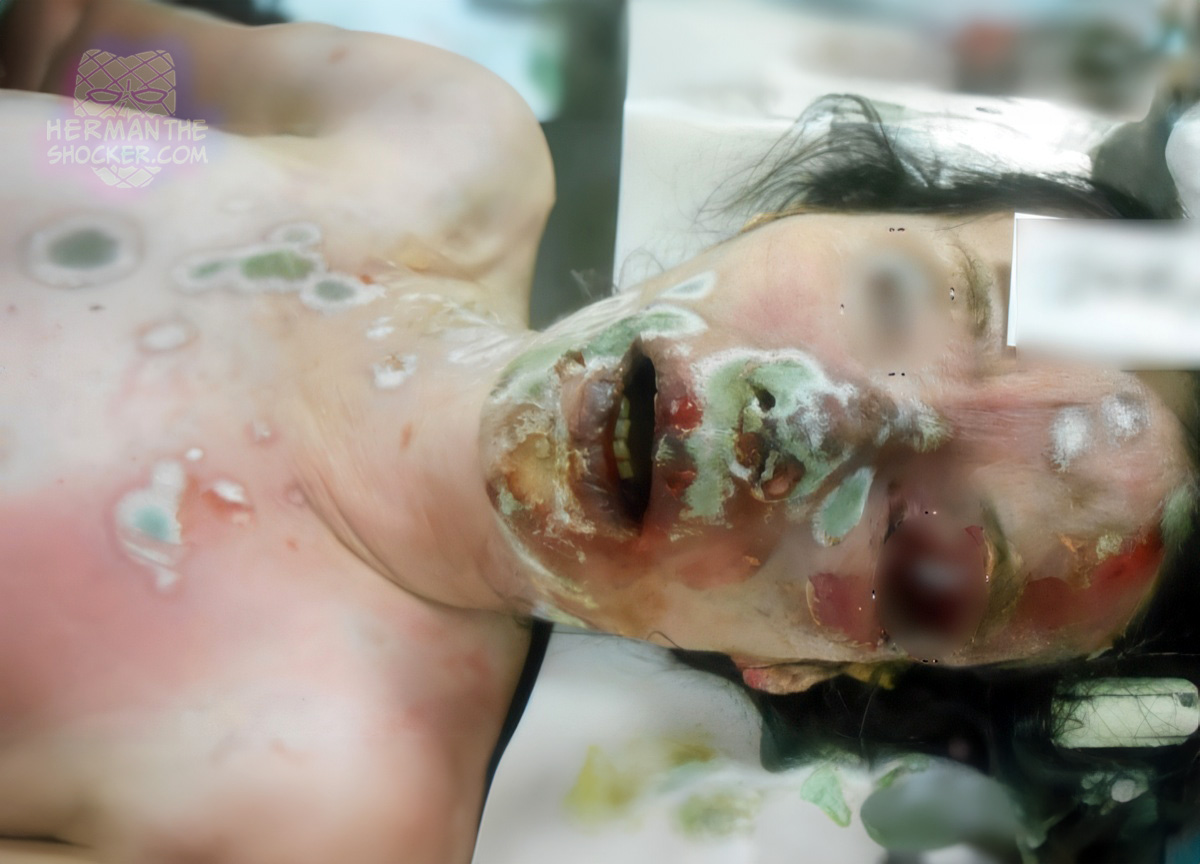A 42-year-old woman was discovered dead, the body was covered with fungal plaques. She had been leading a solitary life and received long-term treatment for schizophrenia. The death incident happened in the first week of April in cold weather when her stove had been lighting. Upon declaration of her brother, she was last seen alive three days ago. When any news about her health could not be received, her relatives entered her home, and found her dead body.
On the scene investigation, her dead body was found on the entrance of the alla turca toilet (Turkish toilet, or squat toilet), bending forward with her knees flexed, and her face resting on the toilet stone. Stove in the room was cold, and stove pipe was displaced. Inside the room a smoky smell was felt.
At autopsy, her dead body was extremely cachectic. Decomposition, and cherry red postmortem lividity (livor mortis) were observed. Diffuse greenish white fungal mold plaques were seen around her mouth and nose, in nostrils, anterior surface of the chest, on the right, and left sides of the neck, chin region, right eye lid, at the middle, and left side of the forehead, and also mold plaques were observed on posterior surface of the left forearm, and, posterior, and anterior surfaces of the right forearm. Widespread green discoloration secondary to putrefaction was seen on the anterior surface of the abdomen. Internal examination revealed greenish white discoloration due to molding around the mouth, and greenish white molds on periepiglottal region. Internal organs assumed a light red color accompanied by manifestations of partial decomposition. As a striking feature, blood was light red. Toxicological analysis demonstrated the presence of 58.1% carboxyhemoglobin (HbCO) in blood samples. It was determined that the death was caused by carbon monoxide poisoning.
Latest posts










